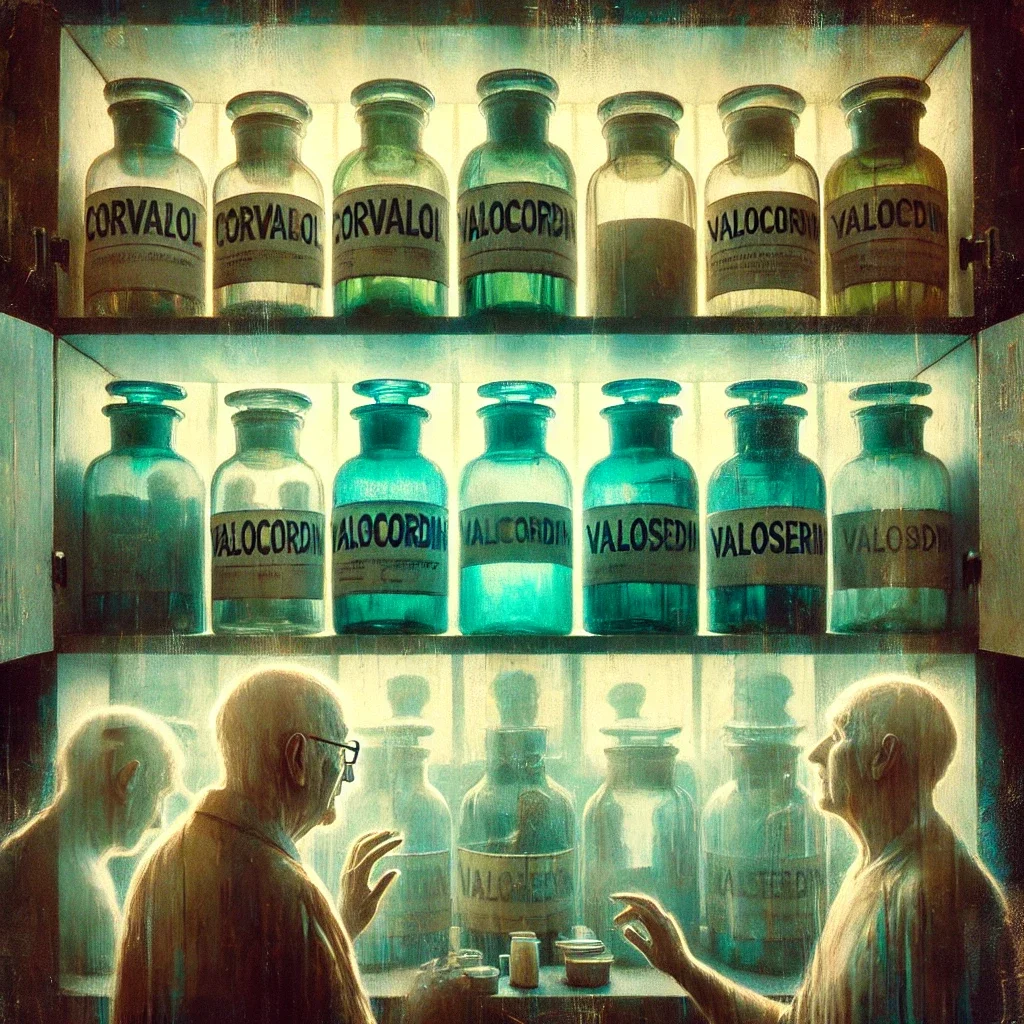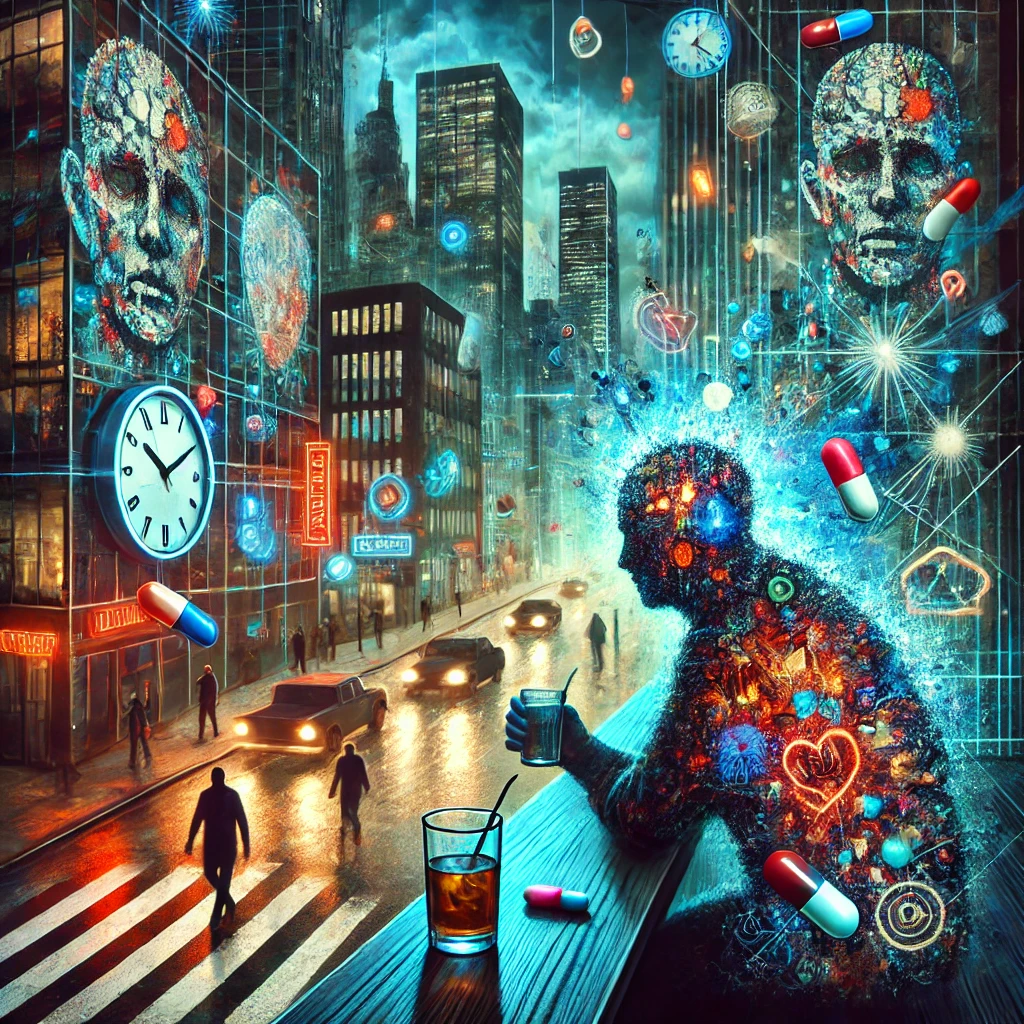
The Semiotics of Pleasure: How Modern Culture Teaches Us to Crave More, Faster, Always
In today’s hyper-stimulated world, pleasure isn’t just a feeling — it’s a language. Modern advertising, digital media, and pop culture bombard us with “pleasure codes,” subtle visual and linguistic cues that train the brain to crave instant gratification. From seductive ads to thrill-seeking heroes, contemporary culture normalizes compulsive desire and turns consumption into a reflex. This article unpacks how these hidden semiotic mechanisms shape our behavior, rewire our dopamine systems, and quietly push society toward addictive patterns of living.

Phenobarbital: The Cultural Medicine of Post-Soviet Calm
Across much of the post-Soviet world, bottles of Corvalol and Valocordin still sit in medicine cabinets — quiet relics of a culture that found comfort in chemistry. Long after most countries restricted barbiturates, phenobarbital remains a household remedy for stress, insomnia, and “heart palpitations.”
In this article, Dr. Igor Beregnoi explores how this enduring dependence on the “drops for calm” reflects not addiction, but a deeper social story — one of anxiety, economic strain, and the human search for stability. From Soviet-era pharmacology to modern self-medication, phenobarbital has become less a drug and more a symbol of collective endurance.

Harm Reduction vs. Total Sobriety: What the Evidence Actually Shows
When addressing substance use, two main paths—harm reduction and total sobriety—offer very different outcomes. Evidence shows that harm-reduction tools like syringe services, naloxone, and medications for opioid use disorder reduce deaths and disease while keeping people engaged in care. Sobriety-focused programs benefit many, especially in alcohol recovery, but abstinence-only approaches for opioids often raise relapse and mortality risks. The strongest results come from blending recovery goals with evidence-based medical treatment.

The Role of Healthy Attachment in Recovery from Mood-Altering Substances
Strong human bonds—whether between mother and child or in adult relationships—are powerful protectors against relapse. Healthy attachment reshapes priorities, buffers stress, and provides a biologically grounded pathway to lasting recovery.

Borderline Personality Disorder: The Trauma That Never Ends
Borderline Personality Disorder (BPD) isn’t just a mental illness — it’s a psychological echo chamber of trauma that was never named, treated, or resolved. Those who live with BPD often describe it as carrying a wound that never closes — trauma woven into their identity, relationships, and emotional world.

Alcohol Use in Urban Life: A Modern Coping Crisis
In the chaos of modern city living — crowded trains, nonstop screens, and vanishing community ties — many individuals turn to alcohol not just for leisure, but for survival.

Sexual Practices Among Substance Abusers
Substance abuse is closely linked to changes in sexual behavior. This article explores the interplay between drug use and sexual practices, examining patterns such as increased risk-taking, transactional sex, altered libido, and the spread of sexually transmitted infections (STIs). It includes supporting data and sociological insights into how substances influence sexual decision-making and behavior.

The Role of Hobbies and Collecting in the Treatment of Substance Use Disorders
Hobbies and item collecting serve as powerful therapeutic tools in substance use disorder (SUD) treatment. Beyond mere distraction, they help restructure behavior, provide psychological relief, and restore identity. This article explores how structured leisure activities--particularly collecting hobbies--support recovery, offering clinical evidence, case studies, and statistics to demonstrate their relevance in long-term sobriety strategies.

Dopamine, Pavlovian Conditioning, and Addiction
This review explores the integral role of the dopaminergic mesolimbic and mesocortical pathways in Pavlovian (classical) conditioning and the subsequent development of addictive behaviors. A synthesis of recent neurobiological research highlights dopamines central function in encoding reward prediction error, assigning salience to novel stimuli, and forming associative learning between conditioned and unconditioned stimuli. Emphasis is placed on how maladaptive conditioning mechanisms contribute to the development of substance use disorders and behavioral addictions. The paper integrates empirical data and statistical findings to present a contemporary model of addiction vulnerability rooted in predictive learning and dopaminergic signaling.

Urbanization, Crowding, and Mental Health: The Hidden Crisis in Modern Society
The global trend toward urbanization has dramatically reshaped how humans live, interact, and experience the world. Over 55% of the world's population now lives in urban areas-a figure projected to rise to 68% by 2050 (UN, 2023). While urban environments promise opportunity, mobility, and access to services, they also bring challenges: overcrowding, limited personal space, environmental stressors, and a disconnection from nature. These factors, increasingly, are being recognized as major contributors to mental health deterioration and substance use disorders (SUDs).
